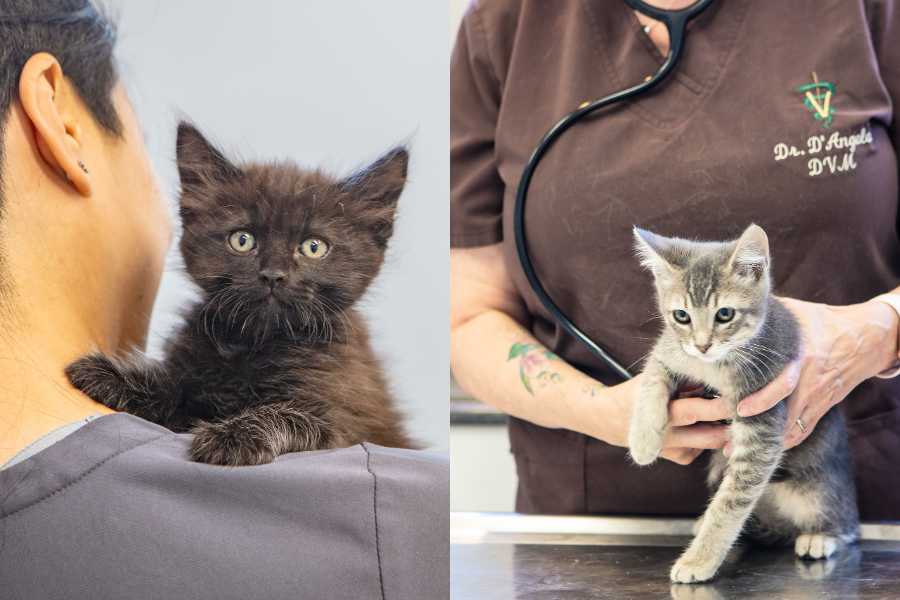
What you need to know about kitten season
by Wendi Piscia | May 5th, 2025 | 2:15 pm
With warmer weather already here, kitten season is in full swing — a time when unspayed cats give birth, leading to an influx of kittens in shelters and rescues. Understanding what to do if you find kittens can help prevent unnecessary suffering and reduce overpopulation.
During kitten season, it’s common to find litters of tiny, huddled fluffballs outside. Our first instinct may be to scoop them up and help, but in most cases, the best thing to do is wait and observe.
Mother cats often leave their kittens for several hours while searching for food. If the kittens appear healthy, warm and quiet, their mother is likely nearby. Removing them too soon (or “kit-napping”) can do more harm than good as their mother’s care is critical for their survival.
How to know if mom is coming back
-
- Watch from a safe distance for a few hours or check back regularly. If the kittens are clean, warm and sleeping, mom is likely around.
- If mom returns, the best thing you can do is leave the kittens undisturbed until they’re old enough to eat on their own. Once they reach about two pounds (typically eight weeks old), it’s time to have them — and mom — spayed or neutered. This step is critical to breaking the cycle of overpopulation.
- If mom doesn’t return after at least eight hours, they may be orphaned.
What to do if the kittens are orphaned
If you are certain the kittens are orphaned or if they appear sick or injured:
-
- Consider fostering! The Napa County Animal Shelter and Adoption Center provides supplies like food and bedding and offers guidance to help you care for them at home. Kittens have a much higher chance of survival in a home rather than a shelter, where they are at risk of stress and disease (ASPCA, 2023). In St. Helena, We Care Animal Rescue also needs foster volunteers.
- Spay and neuter to stop the cycle. Preventing litters before they start is the most effective way to reduce suffering and overcrowding in our shelters. Napa Humane operates the only year-round, low-cost spay/neuter clinic in Napa County. If cost is a concern, reach out so that we can discuss available resources.
- If you’re unable to care for the kittens, contact the Napa County Animal Shelter at 707-253-4382 to ask if they have space. Keep in mind, though, that shelters should be a last resort. Shelters house many animals in close quarters, which increases the risk of illness and stress. Whenever possible, keeping kittens in a home environment — even temporarily — is safer and healthier for their development.
Kitten season is largely preventable. A single pair of cats and their offspring can produce thousands of kittens in just a few years (Humane Society of the United States, 2023). Spaying and neutering is the most effective, humane way to stop this cycle and reduce the number of kittens born into homelessness.
At Napa Humane, we are committed to reducing the number of community cats through spay/neuter services. In 2024 alone, we provided spay/neuter for 854 community and feral cats — and over 4,132 in the past five years.
Kitten season is a crucial time to take action. By ensuring pets are spayed/neutered, knowing when to intervene, and supporting TNR programs, we can help reduce the number of kittens in need and give every cat the best chance at a healthy life.
The topics discussed in this feature are part of a larger conversation regarding animal welfare in Napa County. Want to learn more? Explore the entire series at bit.ly/NVRNapaHumane.



























































